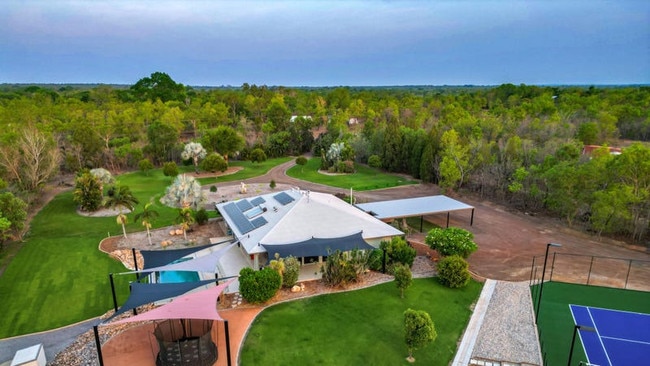How the Top End’s property market has declined this decade
The Top End’s property market has endured a tough decade. Read what’s happened to your home price and check out our damning chart.
Northern Territory
Don't miss out on the headlines from Northern Territory. Followed categories will be added to My News.
Comprehensive real estate data has shown the decade-long death-spiral of the Northern Territory’s property markets.
Decade-long suburb price performance measures highlight the slow market growth that has dogged Territory mortgagees and investors since the local economy began to slide around 2017.
While every other capital city has recorded significant median home price increases in the past decade, the Territory is by far the nation’s property laggard.
The findings are reiterated in the latest PropTrack Home Price Index, released on Thursday, which show home prices in Darwin fell by 0.25 per cent in December and are sitting 0.20 per cent lower compared to a year ago, with the monthly growth rate for all dwellings across the NT at -0.01 per cent.
The data, which is based on information provided under licence by the Department of Lands and Planning, Northern Territory, shows units led the decline, dipping 0.9 per cent year-on-year, while house prices were stable (+0.02 per cent).
Figures released last month from realestate.com showed that over a 10-year average, the Territory had by far the nation’s worst property growth outcomes.
More damning, figures compiled by realtors Ray White Real Estate show the extent of the slump compared to other jurisdictional capitals.

The figures showed Darwin’s decade-long median house sale price increased a meagre 0.5 per cent between 2014 and 2024, from $535,000 to $563,000.
The next lowest was Perth, which climbed by 3.1 per cent annually and Melbourne which rose by 4.6 per cent each year, with Hobart, Sydney and Adelaide topping the decade-long averages with 7 per cent, 6.9 per cent and 6.7 per cent respectively.
Results were even worse for Top End apartment owners with the median unit price falling 1.4 per cent annually from $438,000 to $380,000, the country’s only capital city to record a fall.
Hobart, meanwhile, recorded 6.8 per cent annual growth, with its median sale price climbing from $272,000 in 2014 to $525,000 in 2024.
Adelaide and Canberra increased by 4 per cent and 3.6 per cent a year respectively.
Unsurprisingly, not a single Territory suburb made it onto realestate.com’s list of Australia’s top 20 suburbs with the highest average annual house or unit price growth.
Figures published by Ray White provide the final confirmation of the dire state of the Top End’s property prices.
Calculating the change in value of a home purchased in 2014 for $500,000 with current figures provides a stark contrast between the NT and southern Australia.

While the rest of Australia has enjoyed considerable increases, the Territory is in negative Territory.
Hobart, for example, reported a 101 per cent increase in house values and 99.4 per cent increase in units on a home bought in 2014, while Adelaide was up 99 per cent and 60.6 per cent respectively.
In contrast in Darwin, house prices were down 1.3 per cent and unit prices dropped 15.2 per cent.
But after a decade of doom, there are signs the Territory could be about to throw off the shackles and enjoy a surge in values.
Louis Christopher from SQM Research reported in November there was optimism around the Territory, notwithstanding the impact of high-profile reports of crime.
“Overall, we are more positive for 2025 and expect housing prices to rise somewhere between 5 per cent and 8 per cent on the back of dwindling listings and a strong rise in employment levels,” Mr Christopher said.
A contributing factor of the Territory’s stagnation has also been a decline in development.
In 2024, both residential and industrial property development in the NT was lower than targeted, as highlighted in the Land Development Corporation’s annual report.
The report stated only 42 new residential lots were created in 2023-24 — lower than the 78 targeted, and lower still than the 160 lots created in 2022-23.
In terms of industrial lots, new lot development sat at nil in 2023-24, lower by only three from the year prior.
More Coverage
Originally published as How the Top End’s property market has declined this decade




